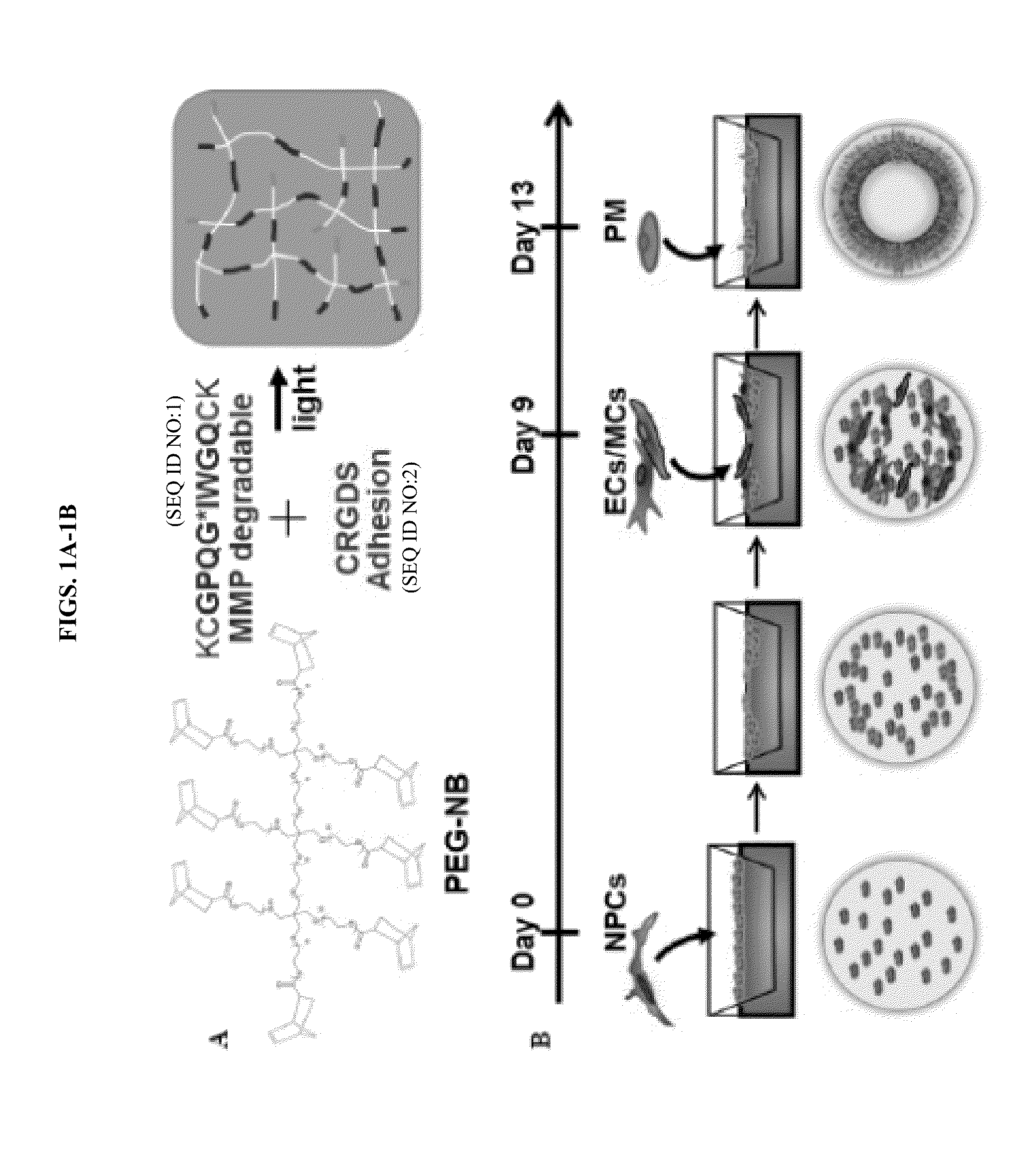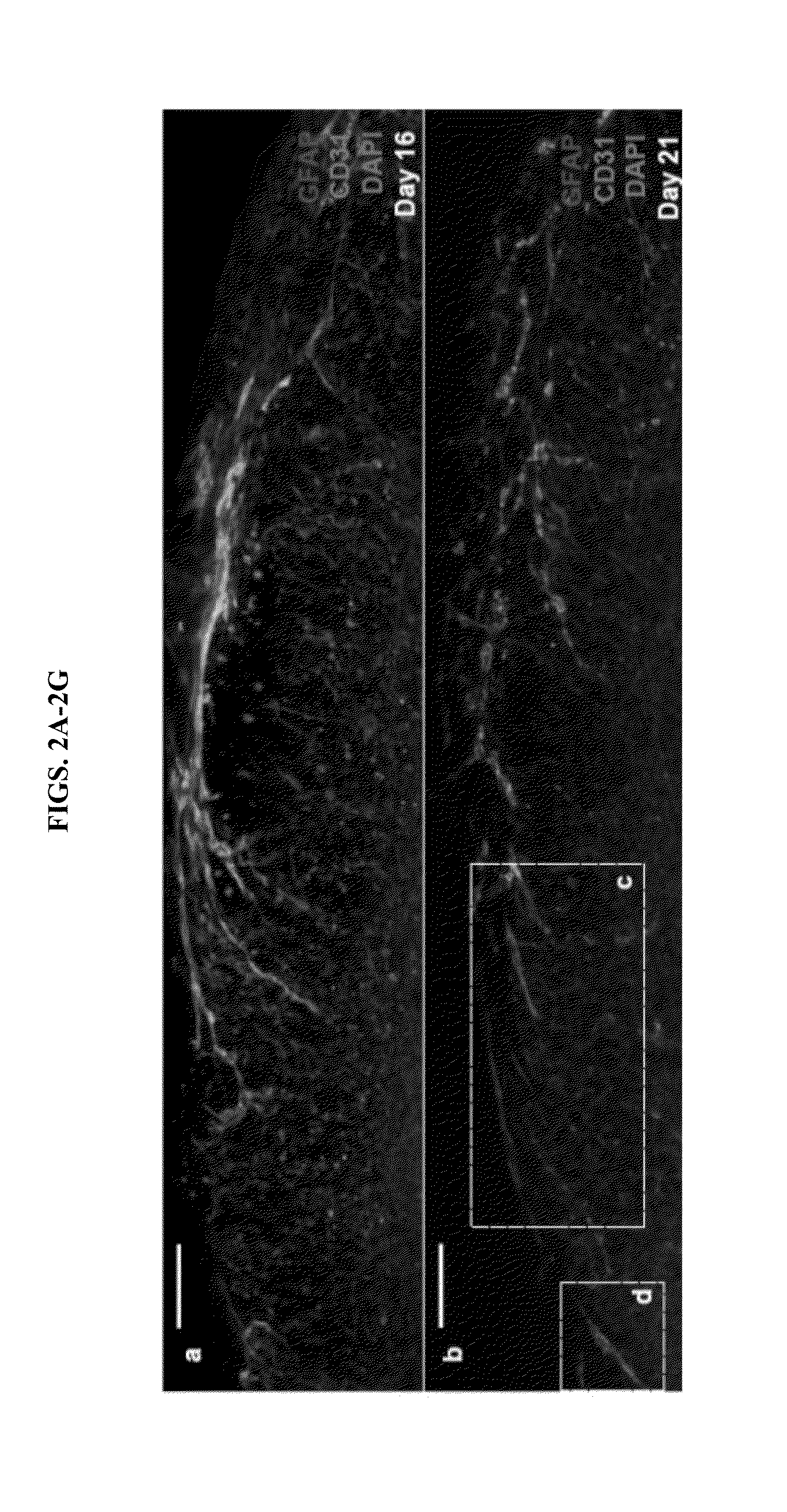Derivation of human microglia from pluripotent stem cells
a technology of pluripotent stem cells and microglia, which is applied in the field of derivation of human microglia from pluripotent stem cells, can solve the problems of limited value for predicting developmental neurotoxicity
- Summary
- Abstract
- Description
- Claims
- Application Information
AI Technical Summary
Benefits of technology
Problems solved by technology
Method used
Image
Examples
example 1
Protocol for Directed Differentiation of hESCs into Hematopoietic Precursor Cells
[0054]The first stage of differentiation requires the derivation of hematopoietic precursor cells (HPCs) from human pluripotent stem cells. The following protocol was developed and validated for obtaining hemogenic endothelium that ultimately gives rise to HPCs. Tenascin C (TenC), an extracellular matrix protein associated with HSC niches, strongly promotes HE and definitive hematopoiesis in this system.
[0055]Microglia / macrophage precursors were produced using feeder-free, chemically defined conditions by modifying a previous protocol for differentiating H1 ES cells down mesendoderm and hemogenic endothelium lineages (see Slukvin 2006; Vodyanik et al., Blood (2006) 108:2095-2105). 6-well plates were first coated with 40 μg Tenascin C overnight 4° C. Tenascin C plates were rinsed with PBS, and then seeded with singularized H1 ES cells at a density of 62,500 cells / cm2 in E8 medium+10 μM ROCK inhibitor Y-2...
example 2
Alternative Protocol for Directed Differentiation of hESCs into Hematopoietic Precursor Cells and Primitive Macrophages
[0058]Provided below is an alternative protocol for obtaining HPCs and primitive macrophages from human pluripotent stem cells.
TABLE 1Differentiation Base MediumAdd:Final ConcentrationDefined component:Iscove's Modified Dulbecco's500mL1XMedia (IMDM) + F12L-ascorbic acid 2-phosphate32mgMg2+ saltMonothioglycerol20uLSodium selenite6μL0.7mg / mLPolyvinyl alcohol20mg / LGlutaMAX ™ 100X supplement5mL(Gibco ®)Non-Essential Amino Acids Solution5mL(NEAA) (100X) (Gibco ®)Chemically Defined Lipid Concen-5mLtrate (CDLC) 100X (Gibco ®)Base CytokinesInsulin10mg / mLHolo-Transferrin10.6mg / mL
TABLE 2Differentiation Medium 1 (DM1)Defined component: (Cytokines 12 mL)Add:Final Concentration:Base media 12 mL1XFGF2 (100 μg / mL) 6 μL50ng / mLBMP4 (100 μg / mL) 6 μL50ng / mLActivin A (10 μg / mL)15 μL12.5ng / mLLiCl (2M)12 μL2mM
TABLE 3Differentiation Medium 2 (DM2)Defined component: (Cytokines 12 mL)Add:Fi...
example 3
Characterizing Human Pluripotent Stem Cell-Derived Primitive Macrophages
[0072]To demonstrate that human primitive macrophages obtained according to the methods provided herein are structurally and functionally comparable to primary cultures, fluorescently tagged, inactivated yeast particles were added to in vitro cultures to induce phagocytosis. Primitive macrophages completely cleared the cell culture medium of tagged yeast particles within 24 hours of induction. Human embryonic stem cells, which served as a control, did not phagocytize the yeast particles.
[0073]To demonstrate that the primitive macrophage cell populations did not comprise microglia, the cells were fixed and stained with a fluorescently tagged antibody specific to Iba-1, a hallmark microglial transcription factor. No Iba-I+ cells were observed, indicating that none of the pluripotent stem cell-derived cells had differentiated into microglia.
[0074]During the formation of the human cerebral cortex, Iba1+ microglia be...
PUM
| Property | Measurement | Unit |
|---|---|---|
| time | aaaaa | aaaaa |
| time | aaaaa | aaaaa |
| time | aaaaa | aaaaa |
Abstract
Description
Claims
Application Information
 Login to View More
Login to View More - R&D
- Intellectual Property
- Life Sciences
- Materials
- Tech Scout
- Unparalleled Data Quality
- Higher Quality Content
- 60% Fewer Hallucinations
Browse by: Latest US Patents, China's latest patents, Technical Efficacy Thesaurus, Application Domain, Technology Topic, Popular Technical Reports.
© 2025 PatSnap. All rights reserved.Legal|Privacy policy|Modern Slavery Act Transparency Statement|Sitemap|About US| Contact US: help@patsnap.com



